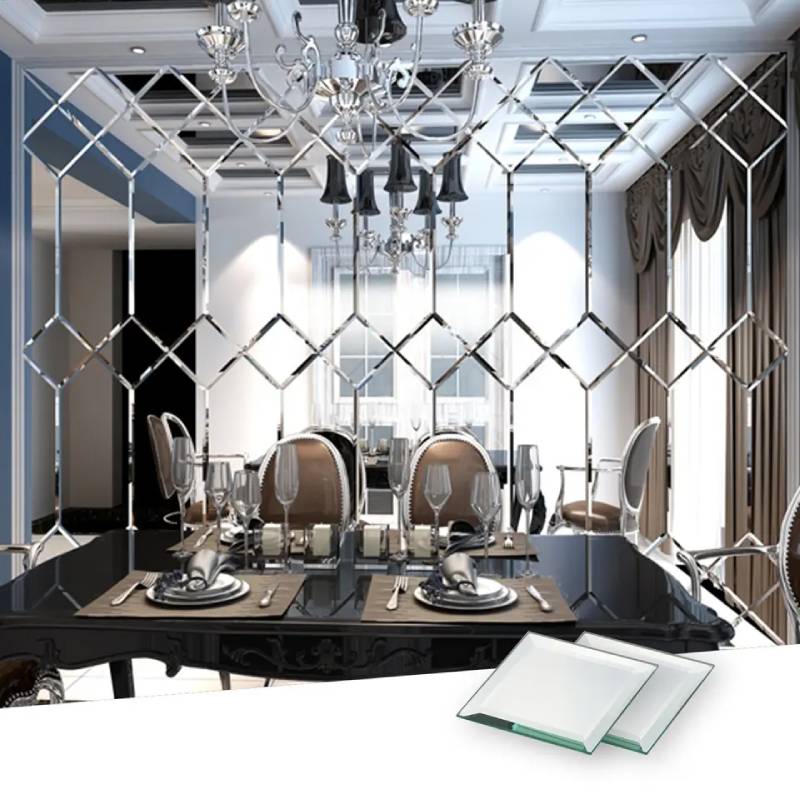Exploring Blue Float Glass An Intersection of Art and Technology
Blue float glass, with its vibrant hue and versatile applications, stands at the crossroads of aesthetics, functionality, and innovation. This unique type of glass has captured the attention of architects, designers, and artists alike, thanks not only for its visual appeal but also for its remarkable properties. In this article, we will delve into the fascinating world of blue float glass, exploring its production process, applications, and the artistry it inspires.
The Production Process
Float glass is a type of flat glass that is created using a process developed in the mid-20th century. The method involves floating molten glass on top of molten tin, which results in a smooth and uniform glass sheet. The addition of cobalt oxide or other coloring agents during production transforms clear glass into stunning blue float glass. This color can range from a light, airy blue to a deep, rich azure, allowing for a wide variety of design applications.
One of the most significant advantages of blue float glass is its clarity and smoothness, which makes it an ideal material for architectural applications. The process not only ensures a high-quality product but also guarantees consistent color throughout, which is crucial for large installations where uniformity is important.
Architectural Applications
Blue float glass is extensively used in modern architecture, where it serves both practical and aesthetic purposes. Its reflective properties can help reduce heat gain in buildings, making interiors more comfortable and energy-efficient. Additionally, blue glass can create a striking visual impact, adding a contemporary touch to skyscrapers, office buildings, and residential homes.
Large glass facades using blue float glass can create a sense of openness while providing privacy at the same time
. The tinted glass can obscure views from the outside while allowing natural light to fill the interior spaces. When strategically placed, blue float glass can enhance the surrounding landscape, reflecting colors from the environment and creating an ever-changing visual experience as the angle of the sunlight shifts throughout the day.
blue float glass
Interior Design and Artistry
Beyond its architectural applications, blue float glass is also embraced in interior design and artistic expression. Designers often incorporate blue glass into furniture, decorative panels, and art installations, lending an element of sophistication to any space. The glass can be used in a variety of forms—from sleek tabletops to intricate light fixtures—allowing light to filter through its blue tint, creating a calming ambiance reminiscent of a clear sky or tranquil water.
Artists have found blue float glass to be an inspiring medium for their work. Its reflective and refractive qualities can enhance the visual impact of sculptures and installations, creating dynamic interactions with light and space. Artists can cut, shape, and combine blue glass with other materials, producing captivating pieces that evoke emotions and provoke thought.
Sustainability and Innovations
As the world becomes more conscious of environmental issues, the glass industry is adapting by adopting sustainable practices. Many manufacturers use recycled materials in the production of blue float glass, reducing waste and energy consumption. Advances in technology have led to the development of low-emissivity coatings for glass, maximizing energy efficiency without compromising aesthetics.
Additionally, innovations in glass production are paving the way for new designs and applications. Smart glass technologies, which allow users to control the opacity and color of glass at the touch of a button, are one such example. Integrating these technologies with blue float glass can open up exciting possibilities for both architecture and design.
Conclusion
Blue float glass represents a harmonious blend of art and technology, offering a plethora of possibilities for architects, designers, and artists. Its production process ensures quality, durability, and consistent color, making it a sought-after material in various applications. As we continue to explore the potential of blue float glass, we find that it not only enhances our architectural landscapes but also enriches our artistic expressions, providing a canvas for creativity and innovation in the modern world.
 Afrikaans
Afrikaans  Albanian
Albanian  Amharic
Amharic  Arabic
Arabic  Armenian
Armenian  Azerbaijani
Azerbaijani  Basque
Basque  Belarusian
Belarusian  Bengali
Bengali  Bosnian
Bosnian  Bulgarian
Bulgarian  Catalan
Catalan  Cebuano
Cebuano  Corsican
Corsican  Croatian
Croatian  Czech
Czech  Danish
Danish  Dutch
Dutch  English
English  Esperanto
Esperanto  Estonian
Estonian  Finnish
Finnish  French
French  Frisian
Frisian  Galician
Galician  Georgian
Georgian  German
German  Greek
Greek  Gujarati
Gujarati  Haitian Creole
Haitian Creole  hausa
hausa  hawaiian
hawaiian  Hebrew
Hebrew  Hindi
Hindi  Miao
Miao  Hungarian
Hungarian  Icelandic
Icelandic  igbo
igbo  Indonesian
Indonesian  irish
irish  Italian
Italian  Japanese
Japanese  Javanese
Javanese  Kannada
Kannada  kazakh
kazakh  Khmer
Khmer  Rwandese
Rwandese  Korean
Korean  Kurdish
Kurdish  Kyrgyz
Kyrgyz  Lao
Lao  Latin
Latin  Latvian
Latvian  Lithuanian
Lithuanian  Luxembourgish
Luxembourgish  Macedonian
Macedonian  Malgashi
Malgashi  Malay
Malay  Malayalam
Malayalam  Maltese
Maltese  Maori
Maori  Marathi
Marathi  Mongolian
Mongolian  Myanmar
Myanmar  Nepali
Nepali  Norwegian
Norwegian  Norwegian
Norwegian  Occitan
Occitan  Pashto
Pashto  Persian
Persian  Polish
Polish  Portuguese
Portuguese  Punjabi
Punjabi  Romanian
Romanian  Russian
Russian  Samoan
Samoan  Scottish Gaelic
Scottish Gaelic  Serbian
Serbian  Sesotho
Sesotho  Shona
Shona  Sindhi
Sindhi  Sinhala
Sinhala  Slovak
Slovak  Slovenian
Slovenian  Somali
Somali  Spanish
Spanish  Sundanese
Sundanese  Swahili
Swahili  Swedish
Swedish  Tagalog
Tagalog  Tajik
Tajik  Tamil
Tamil  Tatar
Tatar  Telugu
Telugu  Thai
Thai  Turkish
Turkish  Turkmen
Turkmen  Ukrainian
Ukrainian  Urdu
Urdu  Uighur
Uighur  Uzbek
Uzbek  Vietnamese
Vietnamese  Welsh
Welsh  Bantu
Bantu  Yiddish
Yiddish  Yoruba
Yoruba  Zulu
Zulu 

